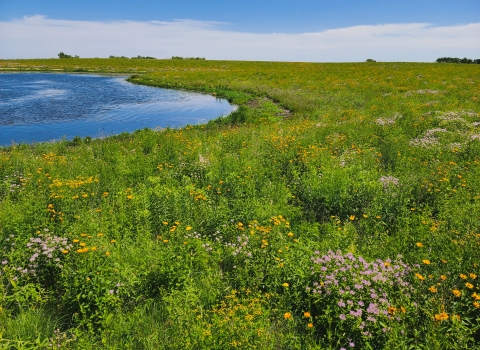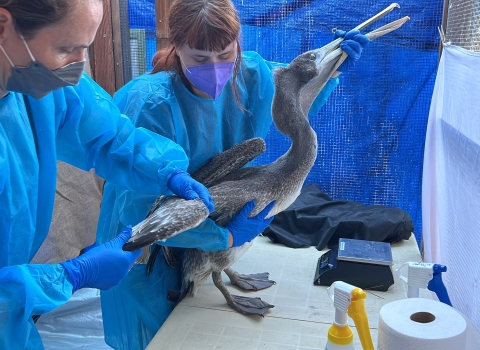DENVER – The U.S. Fish and Wildlife Service and partners have completed an intensive 14-day hazing operation on Togwotee Pass in Wyoming that indicates initial success in teaching grizzly bear 863 and cubs to avoid vehicles and people. Grizzly 863 and her cubs had become habituated and were approaching vehicles and people, setting up potentially dangerous conflicts. The public’s avoidance of the area in recent days has contributed to the ability of wildlife managers to conduct operations safely and productively. However, grizzly 863’s healthy fear of people and vehicles will continue only if the public avoids the area and practices responsible wildlife viewing behavior.
“We thank the public for supporting efforts to avoid the area in recent days,” said U.S. Fish and Wildlife Service Regional Director Noreen Walsh. “To build on this success, we need the public’s cooperation in continuing to avoid the area, and remember to always give wildlife the space and respect they deserve.”
This operation will now monitor the bears and engage in limited hazing efforts coordinated among the U.S. Fish and Wildlife Service, U.S. Forest Service, Wyoming Highway Patrol, and Wyoming Game & Fish Department.
When wildlife viewers stop on the roadside to view the bears, the behavior causes more drivers to also stop their vehicles, often in unsafe locations, creating the potential for crashes and enticing people to approach the bears. Wildlife managers have dedicated significant resources to maintain the safety of both bears and people, and if hazards to bears and people return, the next management step is to relocate the bear and her cubs. By avoiding stopping on or along the highway, approaching, or feeding bears, the public can minimize the need to escalate the severity of management options for the bear.
Concerned members of the public have suggested that the Service establish a volunteer group to talk with people along the highway. The Service and partners have determined this option is not viable due to significant safety concerns. Highway 26/287 is a major arterial highway for western Wyoming. The agencies involved concur that any attempt to facilitate viewing would encourage unsafe conditions along this already busy highway.
Wild animals are unpredictable, especially a grizzly bear with cubs. While bear 863 and her cubs have not displayed aggressive behavior to date, that is not a reliable indication of future behavior. Partners agree the public needs to continue to avoid the area and exhibit responsible wildlife viewing behaviors and to spread this message to others in the community. Wildlife managers will continue to patrol the area to monitor behavior of the bears and people and conduct intermittent hazing to reinforce bear 863’s avoidance of people and vehicles.
The U.S. Fish and Wildlife Service, U.S. Forest Service, National Park Service, Wyoming Highway Patrol, and Wyoming Game & Fish Department remain unified in our approach and are committed to ensuring safe conditions for people and wildlife. The local community, particularly wildlife photographers, can assist in ensuring a safe future for humans and bears by modeling the appropriate behaviors we ask of all visitors:
- Continue to avoid the Togwotee Pass area, ensuring efforts to date remain successful, mitigating the need for further action
- Never approach bears; remain in your vehicle, or at a minimum remain at least 100 yards (300 feet) away, or about the length of a football field.
- Practice ethical wildlife viewing by using only paved, legal highway pull-outs and never disturbing natural behaviors by remaining a minimum of 300 feet away - if an animal notices you and/or changes their behavior or actions, you are too close.
- Never feed, leave food for, or make food accessible to bears.
- Obey traffic signs, laws, and regulations – stop only in designated paved pull-off areas
- Follow the direction of wildlife management officials; do not interfere with or approach hazing operations.
The mission of the U.S. Fish and Wildlife Service is working with others to conserve, protect, and enhance fish, wildlife, plants, and their habitats for the continuing benefit of the American people. For more information on our work and the people who make it happen in the West, visit our website, or connect with us through any of these social media channels: Facebook, Twitter, Flickr, YouTube, and Instagram.


